Microphotography is a form of non-verbal communication. At its best, a micro photo conveys a thought from one person, the photographer, to another, the viewer. In this respect, microphotography is similar to other forms of artistic, nonverbal communication such as painting, sculpture, and music.
A successful micro photo shows the viewer something that he has perhaps looked at many times without really seeing.
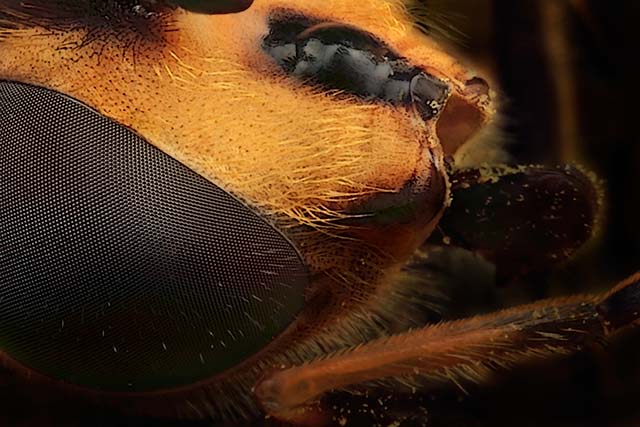
To create a meaningful statement – a pertinent photo – the photographer must gain an insight into the world of insects that goes far beyond the casual “once-over” given to items or events of lesser personal importance.
The photographer must grow to deeply understand this micro world, its broad overall sweep and its subtle nuances. This intimate knowledge produces the insight required to photograph a subject at the most effective moment and in the most discerning manner.
Microphotography can uncover the colors, textures, shapes and emotions of the mysterious world of insects. It opens up a whole new world of opportunities for capturing eye-catching images.
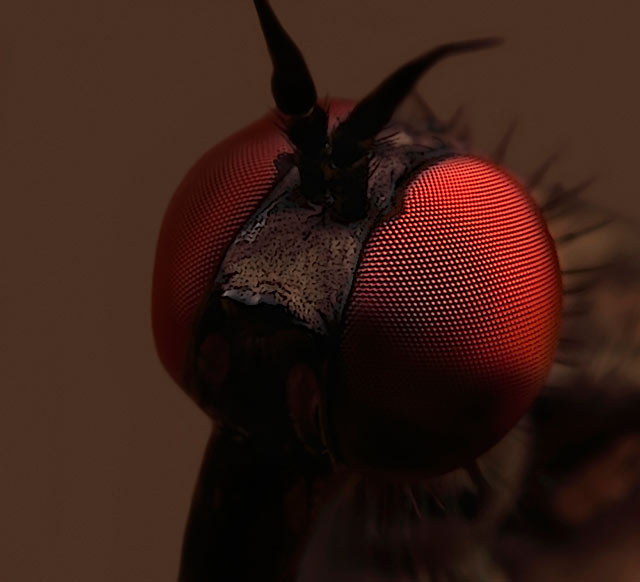
Microphotography as Fine Art
The inherent realism of microphotography is, in fact, somewhat of an obstacle to its acceptance as an art form. A compounding factor is the universal usage of photography: everybody has a camera, therefore everybody is a photographer, but surely everybody is not an artist.
An image must have something that carries it beyond pure documentation. It has to offer the viewer deeper insights and understanding. There has to be a quality of mystery —something left unanswered that requires the viewer to investigate the picture and think about it further.
A way to reach the realm of art is through abstraction by photographing as extremely close as possible – filling the entire frame with a strong pattern like the mandibles, eye(s) or antennae of an insect.
Each viewer brings his or her own background and imagination to interpret the resulting images. Often they will see things that I never could have imagined, thereby enriching me with alternative insights and interpretations.
Only when the image has both compositional strength and that almost indefinable commodity known as inner conviction does it prove to be a work of art. Microphotography allows the photographer to bring the smallest details of a subject to life.
If an micro image is viewed as a work of art, viewers ask inwardly directed questions like, “What do I see in the photograph?” and “How do I respond to it?”.

Inner conviction is the strong personal belief that your imagery has meaning beyond its obvious, outward trappings. Inner conviction also means your way of expressing your personal view as you see it, and as you want it seen by others. This implies doing what you want to do, whether or not the value of your work is immediately recognized by others.
Whether my images qualify as art is not for me, but for others, to decide. But I can say this: They depict the essence of the subjects of the micro world as I see and feel them. To me, that’s the most important thing.
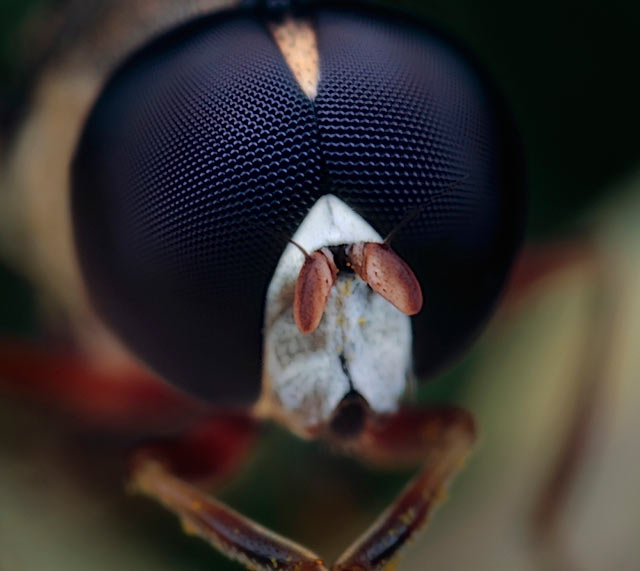
Creativity
Creativity is a product of desire, thought, experience, experimentation, and inner conviction. The person looking for creativity sees possibilities that others tend to miss. Creativity implies originality—doing something new—therefore, it also implies difficulty.
Few difficult things are even attempted without a deep, active desire to succeed.
Experience tells you what to expect from most things you’ve done previously. Yet too often, experience tends to lock you into regular habits and proven techniques, stifling creative potential. Experimentation can be random or directed.
You can work toward improving weaknesses in your existing work or toward expanding your horizon by delving into untried approaches. A realistic image can be fine art if it offers the viewer deeper insights and understanding of the magical world of insects.
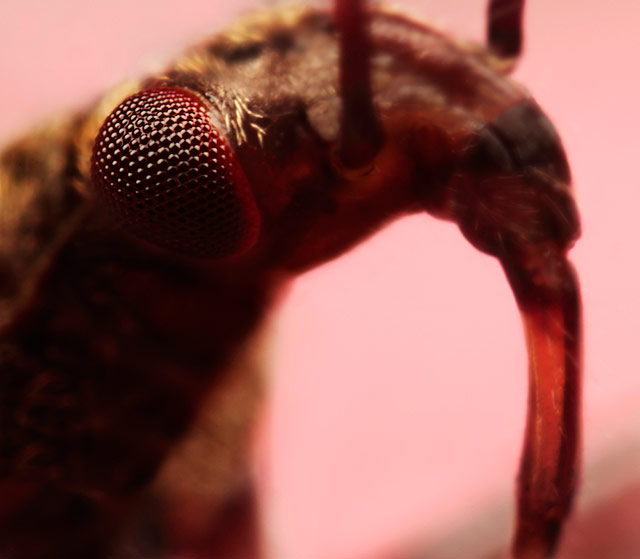
Enthusiasm
I cannot overemphasize the importance of enthusiasm. Essentially, if the scene excites me visually, I will photograph it. It is purely subjective. This positive emotional response is extremely important to me.
Without it, I have no spontaneity and my photographs are labored efforts. With it, microphotography becomes pure joy.
Enthusiasm also manifests itself as a desire to continue working even when you’re tired. Your enthusiasm, your excitement, often overcomes your fatigue, allowing you to continue on effectively as fatigue melts away.
People who attempt creative work of any type without feeling any enthusiasm for that work have no chance at success. Enthusiasm is not something you can create, either you have it or you don’t.
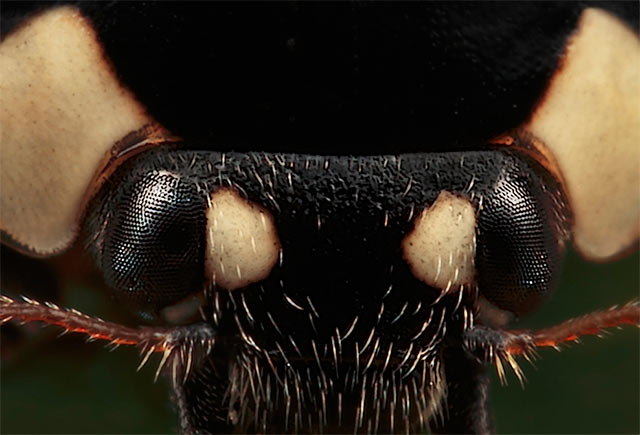
Visualization
Visualization starts with looking and seeing—in-depth looking and seeing, rather than the casual perusal that we all do in our everyday lives.
Because micro images differ from larger-scale ones, being able to look for potential interesting compositions will take a bit of training and practice. Walk around in a garden and look at everything through a strong magnifying glass.
When you look for subjects to photograph in the micro world, you start to observe everything more intensely. You’ll find it important not only to look very carefully, but also to draw on your interests to provide deeper, more personal meaning to what you see.
“Looking” is one thing; “seeing” is quite another. The perceptive photographer can see compositions where others look, but see none.
He develops a seeing eye that draws him to exciting, new compositions.
The difference between seeing and not seeing is the insight in the subject matter you’re photographing. Whenever you gain further understanding and insight, you’ll make photographs that progressively penetrate deeper into the essence of that subject.
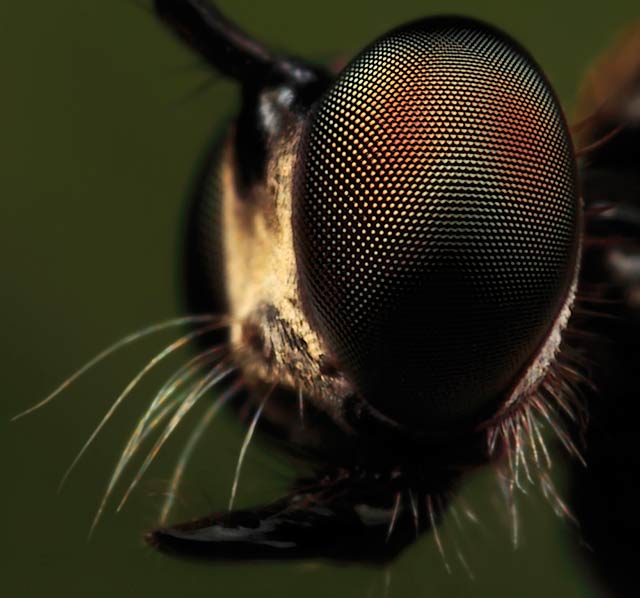
Composition
The most effective method of conveying your thoughts photographically is good composition. But, you may ask, what is composition? The term is constantly used, seldom defined or discussed, rarely understood, yet never questioned.
One dictionary defines it as “an arrangement of the parts of a work of art so as to form a unified, harmonious whole”. If microphotography is your means of self-expression, then composition must be the vehicle with which you express yourself clearly, concisely, and smoothly.
Composition is the means of bringing viewers into your photograph and holding their attention long enough to define their own feelings. There are two aspects of good composition that are of prime importance.
The concept of a unified thought is one; simplicity is the other. The term “unified thought” means that all the elements of the photograph work together, i.e., a central concept underlies the photograph.
For microphotography this concept translates to the somewhat narrower concept of a center of interest. Before discussing both concepts, we need to understand the human visual process.
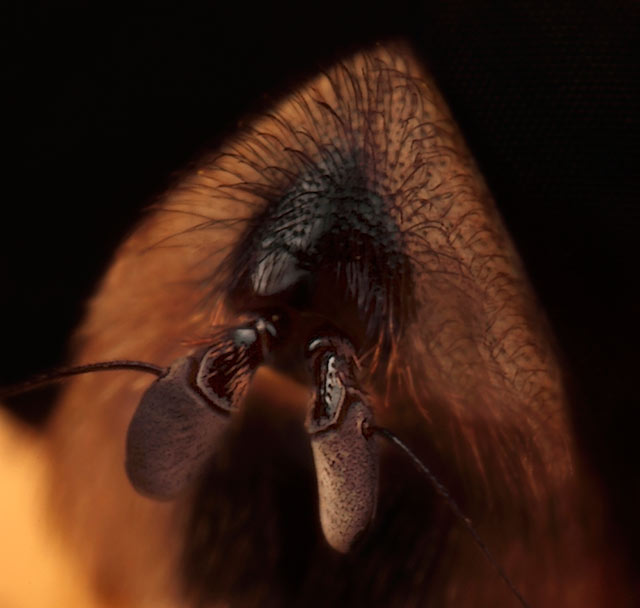
Dronefly
How the Human Eye Sees
The eye does not see whole vistas at once. It views the world in small chunks and then puts the pieces together to form the complete picture. The angle of sharp vision is extremely small, only about three radial degrees.
With the eye able to see only small bits sharply at any moment, it must move about speedily to view the entire scene.
While studying the scene the eye stops momentarily at prominent objects and sees them with real clarity, filling in the rest in a rather fuzzy manner.
When a photograph is well composed, viewers first see the elements that the artist wants them to see most prominently. With good composition, the photographer leads viewers through the photograph in a controlled manner.

Springtail
Center of interest
Each picture should have only one center of interest to which the viewer’s eyes are attracted. A picture without a dominant center of interest or one with more than one dominant center of interest is puzzling to a viewer.
Subsequently, the viewer becomes confused and wonders what the picture is all about. When the picture has a dominant (compound) center the viewer quickly understands the picture. If you concentrate on a center of interest, your photographs will be cohesive.
The specific subject to be portrayed must be set in your mind as you prepare to take a picture.
When there is nothing in the picture to attract attention to a particular area or object, the eyes wander throughout the scene. The center of interest may be the insect’s mandibles, eye(s) or antennae so attention is directed to one definite area.
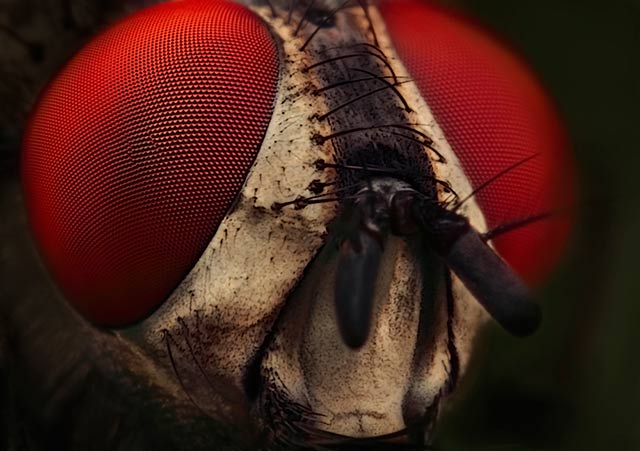
Simplicity
For the beginner or advanced photographer, simplicity is a necessity. The simpler the composition, the more likely he or she is to maintain control and direct the viewer’s attention to the important elements. The importance of simplicity cannot be stressed too strongly.
Assuming that they are technically competent, most unsuccessful photographs fail because they are too complicated rather than too simple.
The photographer is unable to elucidate his thoughts clearly and concisely, and the resulting photograph illustrates his uncertainty and lack of direction. In some cases, this may produce exactly the desired effect, but in most cases it will not.
Take another look at your images and see how many could have been improved by simplifying the composition. How often do you crop your images afterwards to improve them? Learn to crop in the camera first. Your challenge in making a good micro image is to get rid of all that is nonessential or distracting.
You want to have one main subject in your composition, and you need eliminate anything that does not support that subject.
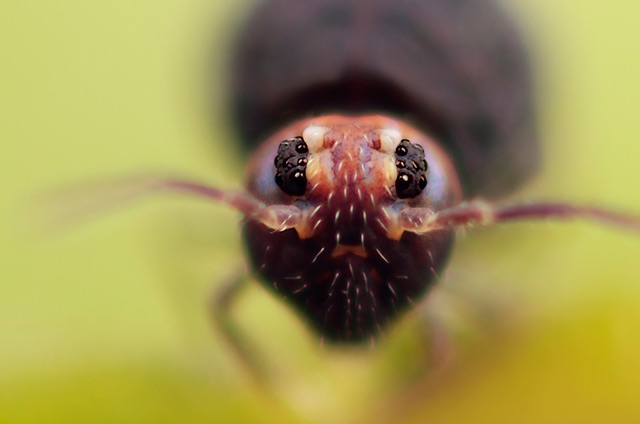
Springtail
One of the most crucial aspects of microphotography is finding subject matter that you want to explore or capture. While shooting micro’s, I try to be mindful of new, unexpected opportunities. Capturing macro images of the small natural world is something anyone can do, but mastering the art of microphotography can take a life time.
With time and practice however, you will find that the possibilities for artistic development are endless and are limited only by your ingenuity and imagination.
by Huub de Waard
Article and photos: © 2016 Huub de Waard. All right reserved.

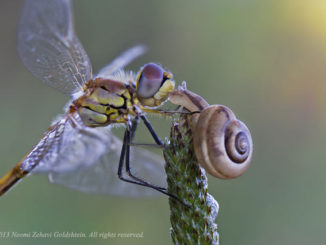
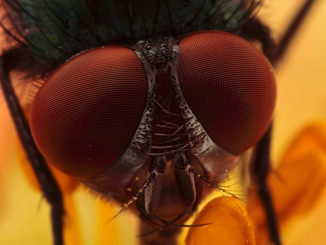
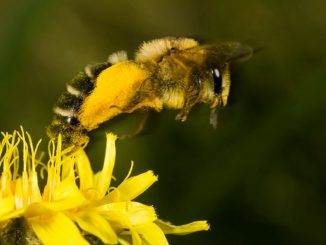
Leave a Reply